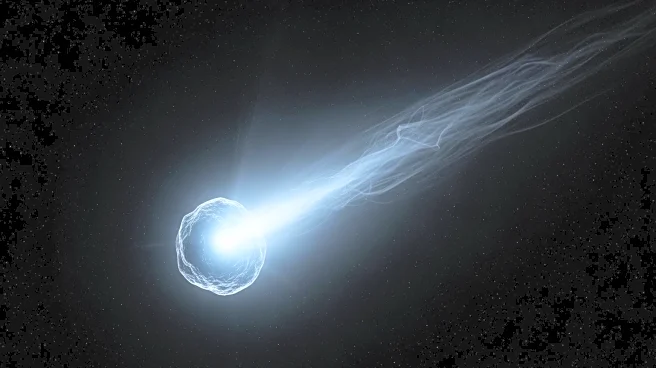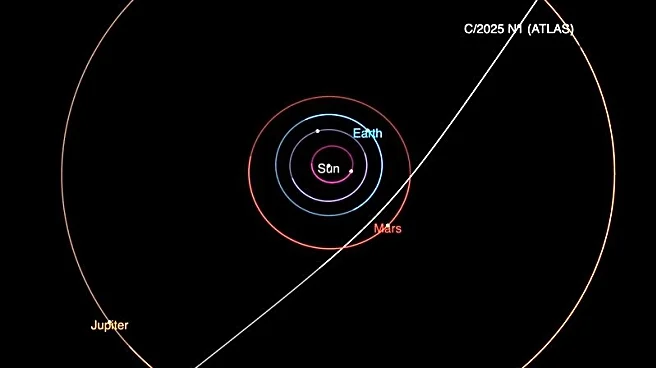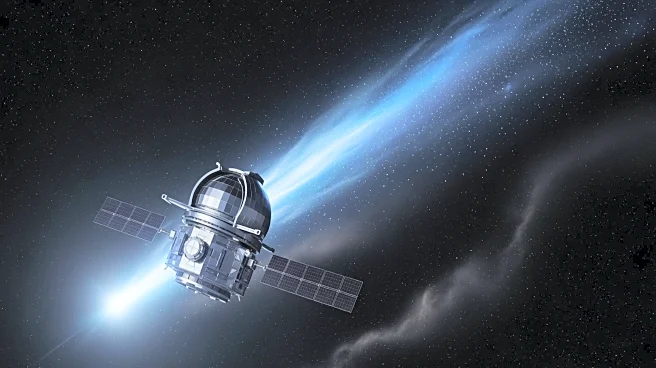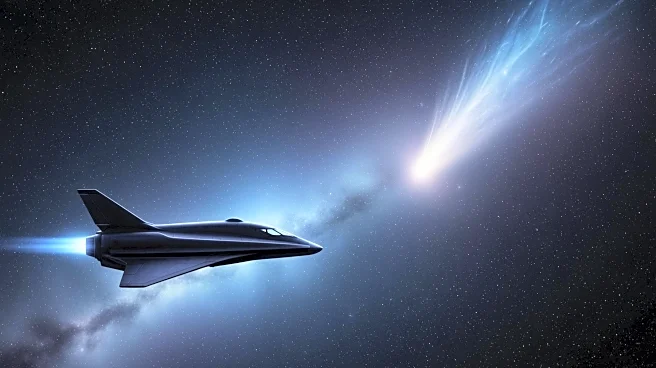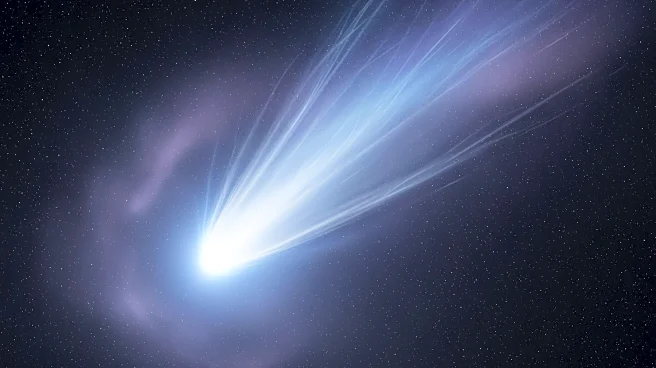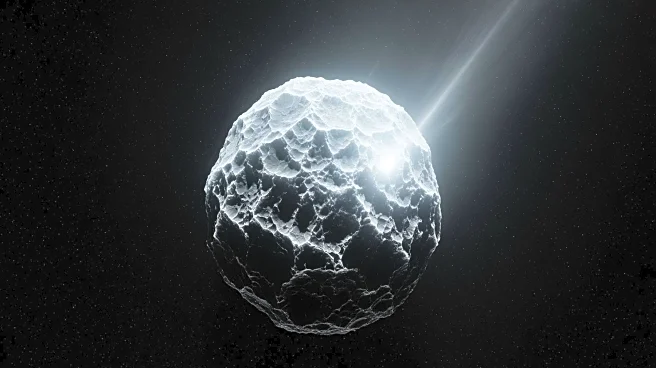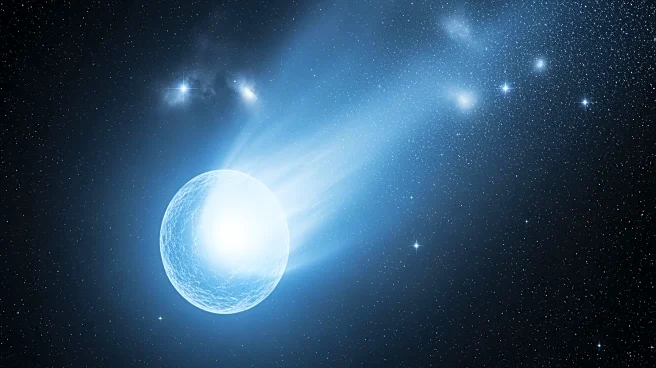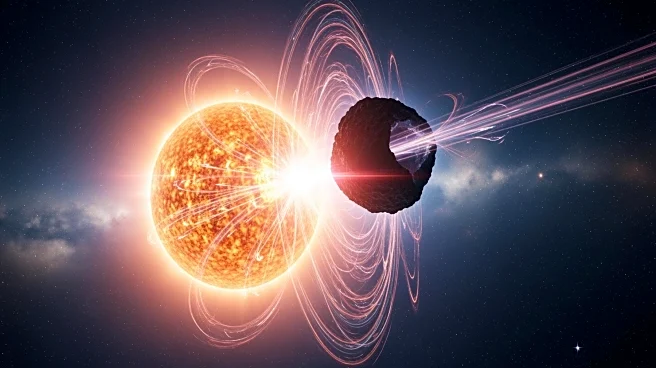What's Happening?
NASA has unveiled new images of the interstellar comet 3I/ATLAS, captured by various spacecraft across the solar system. The comet, traveling at 137,000 miles per hour, was first detected in July by the ATLAS telescope
in Chile. The images reveal the comet's halo of gas and dust, providing insights into its chemical composition. This marks the third confirmed interstellar object, following 1I/'Oumuamua and Comet 2I/Borisov. NASA's missions, including the Perseverance Mars rover and the MAVEN orbiter, have contributed to the observations, aiming to gather as much data as possible during the comet's brief visit.
Why It's Important?
The release of new images of 3I/ATLAS is crucial for advancing our understanding of interstellar objects. These observations offer a unique opportunity to study the chemical makeup and physical properties of a comet from outside our solar system, potentially revealing information about the conditions in other star systems. The data collected could enhance our knowledge of the universe's history and the processes that govern the formation and evolution of celestial bodies.
What's Next?
NASA plans to continue observing 3I/ATLAS as it moves through the solar system. The James Webb Space Telescope is expected to conduct further observations in December, providing additional insights into the comet's characteristics. Ground-based telescopes will also contribute to the study, aiming to maximize the scientific knowledge gained from this interstellar visitor. These efforts will help scientists better understand the origins and properties of such cosmic objects.
